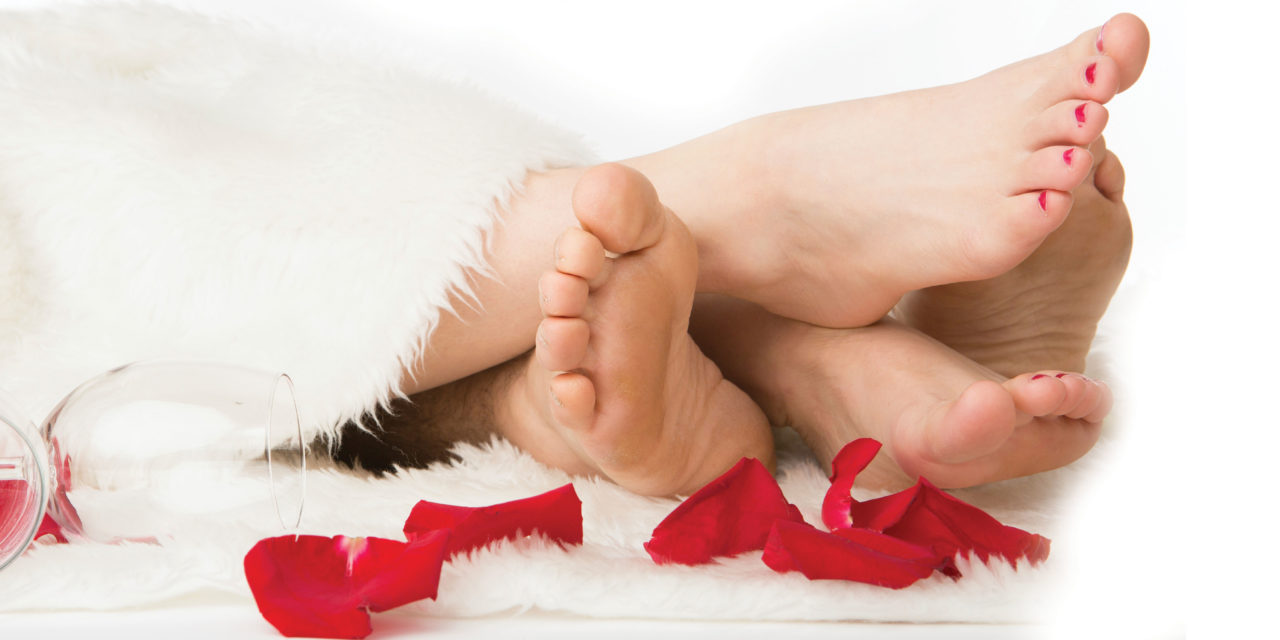by Kate M. Breslin
Whether it’s Marvin Gaye and Chardonnay or a good old-fashioned hand holding, everyone has something that turns him or her on. Not everyone’s turn ons are uniform, however. What makes one person’s toes curl may send another running, much like one person’s trash is another’s treasure.
As Valentine’s Day rounds the corner, couples tend to pay more attention to turn ons and turn offs. After all, tis the season to get it right.
Tips from local residents, counselors, and therapists might help you navigate the love terrain, if not enjoy a voyeur’s thrill.
Relying on the anonymity of their admissions, Carroll residents were forthcoming with their descriptions of what thrills them sexually or turns them off. Turn ons range from personality traits, such as “a good sense of humor” and “confidence,” to physical characteristics like “big hands” and “attentive eyes.” Some Carroll residents noted that a “crisp white shirt and passion for good food and drink” tops their lists of turn ons, while others cited their shared history and intimacy with partners. A few Carroll residents detailed the allure of “smells, even body odor and sweat” and “hair… everywhere.”
Insecurity, arrogance, and ignorance topped the list of turn offs. A few residents decried “fake theatrical noises” made during intercourse and “partners who want a badge for a job well done” as mood breakers.
“Nobody wants a partner who gives pleasure and then looks up like he’s expecting a cookie,” one resident quipped.
Therapists and counselors in the county offered limited details about turn ons and turns offs shared during sessions with their clients, for confidentiality reasons. Many opted to focus on the ways to increase feelings of intimacy (aka turning partners on). Top turn on techniques – good communication skills and an emotional connection.
Marriage and family therapist, Alexandra Rickeman, discussed gestures that reduce stress as a modern interpretation of a turn on. Though Rickeman recognizes that this type of turn on may seem “un-erotic” and “un-romantic”, she listed several de-stress turn-ons including: “flexible work schedules/work from home/telecommuting, supportive family living nearby, reliable, high-quality childcare, financial stability, overall good physical health.”
All of these attributes can help a couple to have “the energy and interest necessary for good sex,” Rickeman added.
In addition to these gestures that may reduce stress, psychologist Dr. Kim Moss, who practices in both Ellicott City and Eldersburg, explained that what turns his clients on is “having a playful and motivated sexual partner.”
“In Carroll County as in all the world, people want to feel appreciated,” he explained. “They want to be fulfilled sexually also, but for a majority people this is not happening.”
LCPC Gina Rassa offered insight into why this lack of sexual fulfillment may occur. A large aspect of feeling turned on, according to Rassa, involves feeling emotionally connected. She explained that “Being touched, helped, spoken to in a kind way, listened to, and praised go a long way for most of us to feel close to our partner and ready for intimacy.”
One Carroll resident mirrored this sentiment when she described, “shared history and shared respect. Knowing all that I know about him and that he knows about me, even just the warmth of his hand” as one of her biggest turn ons.
Not all Carroll Countians feel comfortable discussing their intimate interests with their partners (let alone with Carroll Magazine). Many of the professionals interviewed discussed the reasons for and implications of this discomfort.
“Many people, especially women, were raised being warned against sex and discouraged from engaging in it or enjoying it,” Rassa explained.
This discouragement, she added, could be incorporated into “core beliefs,” which can translate into sex being seen as “an obligation and a source of contention rather than a fun, intimate, wonderful activity that brings you closer to your partner.”
If this core belief has become ingrained in her clients’ worldview, Rassa suggests they “take stock of what is making this uncomfortable for [them]” and work to “think about what messages [they] got about sex when [they] were growing up, and even as an adult.”
If this focused reflection does not ease discomfort, Rassa recommends discussing these concerns with a counselor. Working with a professional can “help people uncover the reasons why they feel they way they do about things and facilitate change.“
Rickeman agreed, noting that an exploration of what contributes to discomfort is a crucial starting place. She also described the importance of considering how time impacts sex and sexuality.
To help navigate future changes that may occur naturally over time, Rickeman urged individuals to start having conversations about sex early in a relationship. Additionally, LCPC Whitney Thompson notes that exploring turn ons and turn offs in a relationship or alone can “help the patient learn who he or she is as well as improve passion in a relationship.”
Taking the time to discuss sexuality is additionally important because without communication, partners are left guessing or drawing from past experiences when they become intimate.
“Commonly, people expect that their partner is in charge of, or responsible for, turning them on,” Rickeman said. “A better way to think about it is that each person needs to turn themselves on to a certain extent.”
Rickeman encouraged people to consider their arousal on a number scale, “with 0 being ‘I’d rather sleep’ and 10 being ‘let’s do this right here, right now.’ Each individual should take charge of getting themselves to at least a 5.”
Whether it’s the love month of February or any day of the week, knowing and discussing what moves you up (even down) the arousal scale matters – if intimacy matters to you – all sources confirmed.
Chardonnay? A crisp shirt? The low light of scented candles? A touch here….or there?

